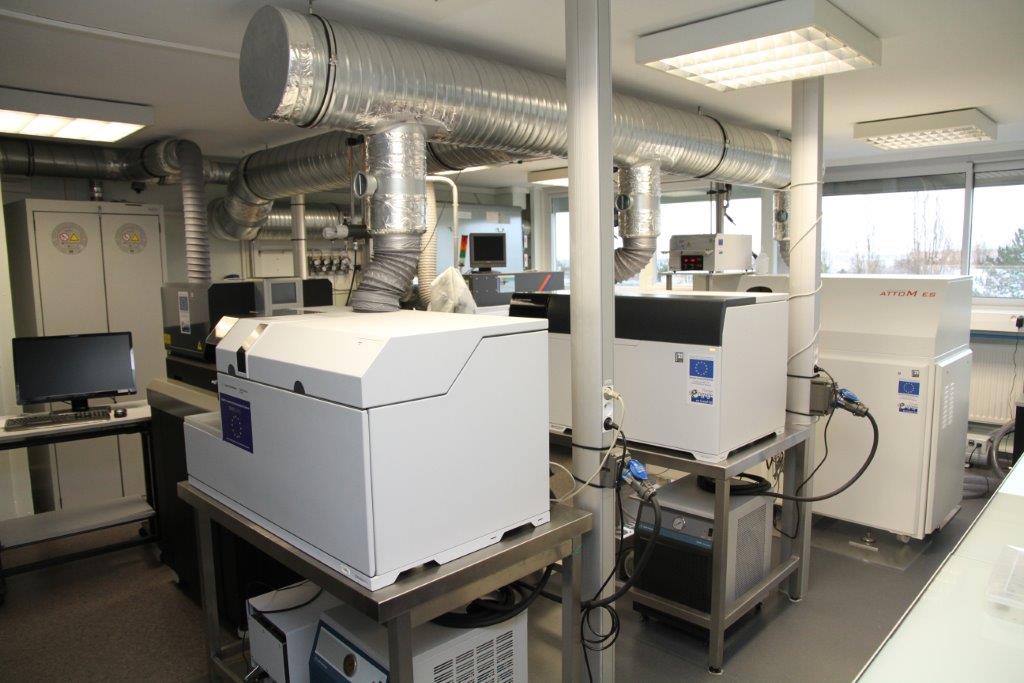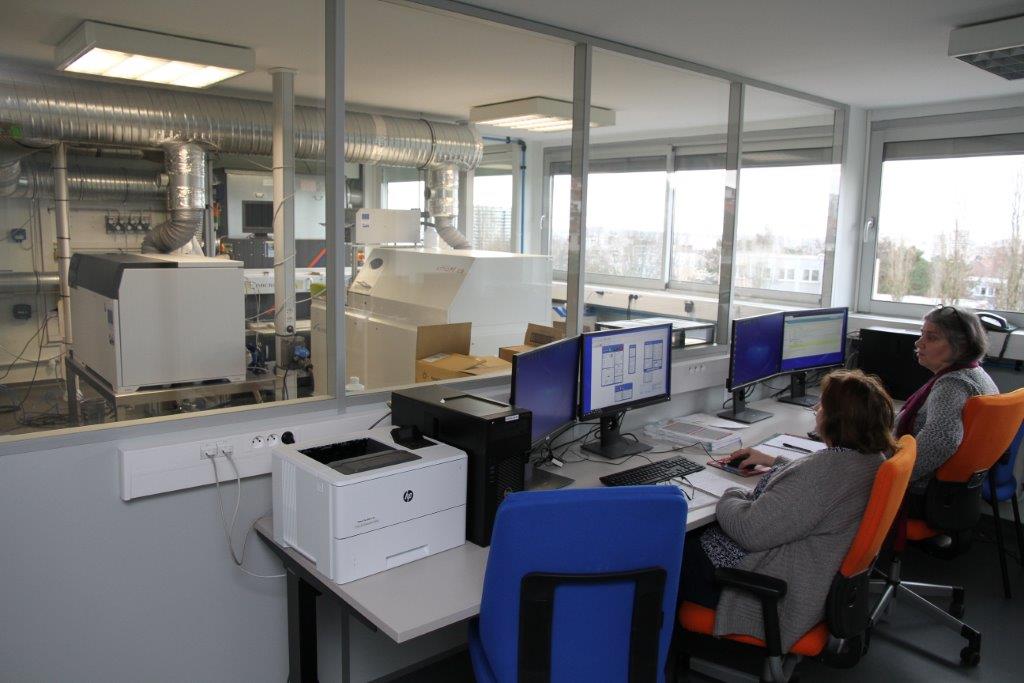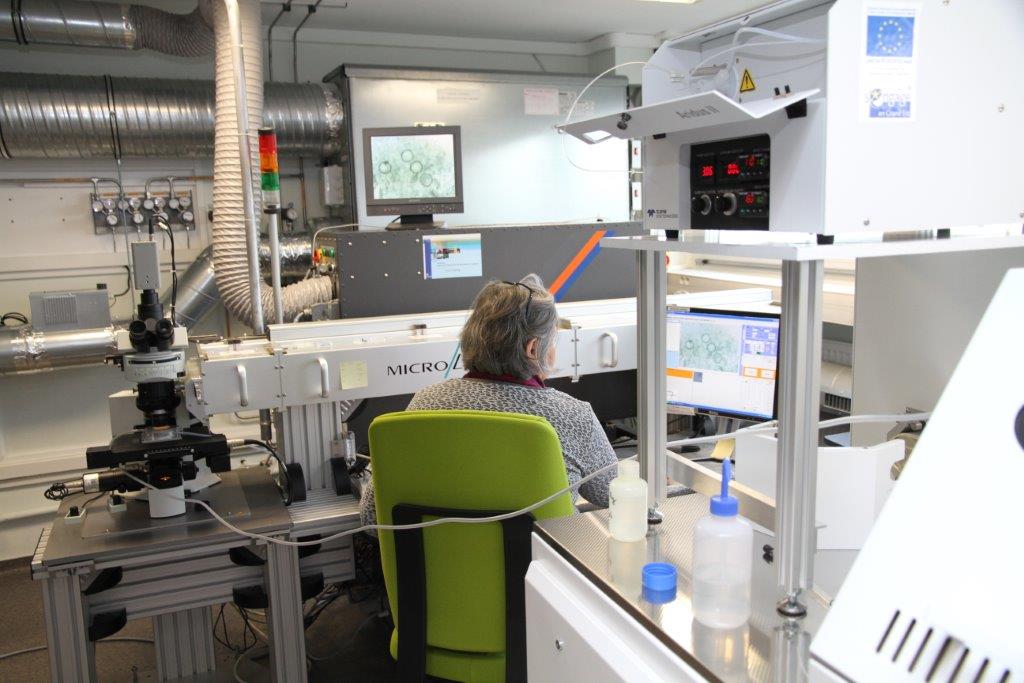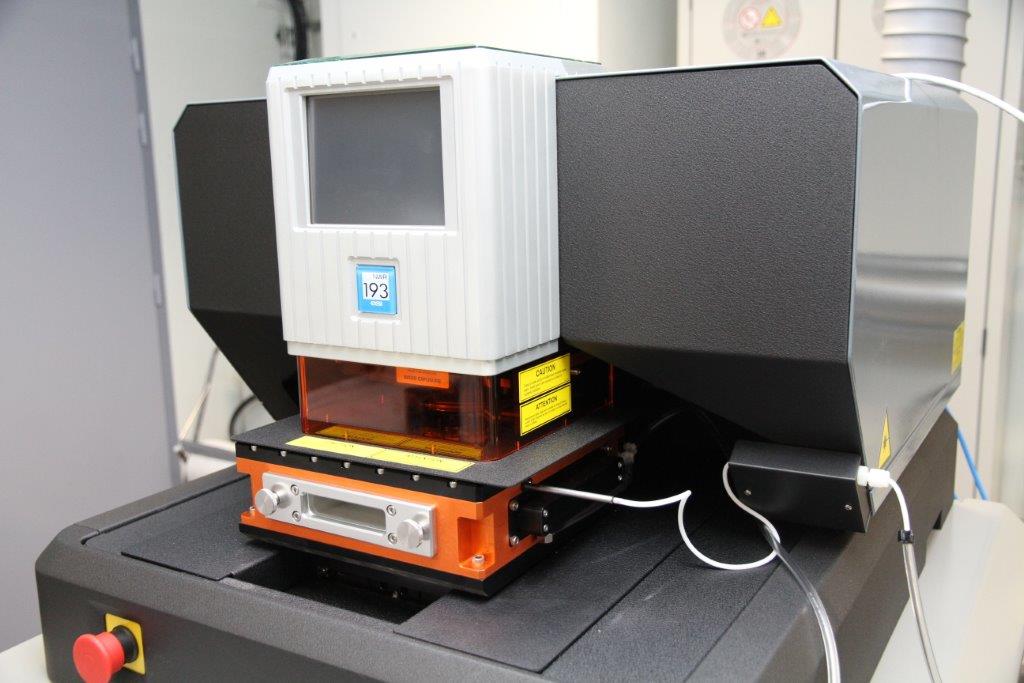LA-ICPMS
Contact:
Chantal Peiffert, technical manager,
Tel. +33 (0)3 72 74 55 47
Marie-Christine Boiron, scientific manager,
Tel. +33 (0)3 72 74 55 42
Julien Mercadier, scientific manager,
Tél. +33 (0)3 72 74 55 59
The platform in video
This platform allows us to make precise measurements at a small scale of the chemical and isotopic compositions of solid phases and liquid phases via the use of lasers coupled to mass spectrometers. Our research objectives are mainly geological, focused on the tracing and dating of processes. Applications are aimed also at better understanding the cycles of metals, in particular those used in the energy transition. These tools can also be used for biological, environmental and medical applications.
The principle of this equipment is based on the interactions between a laser and a solid or a fluid. The lasers allow us to ablate zones of interest on small surfaces of just a few square micrometres in size. The ablation products generated are then transported to the mass spectrometer where the constituent elements are measured with very low limits of detection.
Our platform is one of the best equipped in France following an expansion in 2018, thanks to funding received from the ‘Plan Etat Région’, the Région Lorraine, and Labex Ressources 21. We currently host two excimer lasers and three ICPMS mass spectrometers, with complementary analytical capacities. A quadripole ICPMS is used mainly for analysing trace elements in minerals. A triple quadrupole mass spectrometer allows, via the use of gas, the classic interferences to be removed and the development of new dating methods. And finally, a high-resolution magnetic sector ICPMS permits very fast measurement of the whole spectrum of elements with very low limits of detection. This instrument is specifically designed for the study of small objects such as fluid inclusions, but can also be used for the analysis of nanoparticles.




Localized analysis of trace elements in minerals and the chemistry of paleofluids
General view of the LA-ICPMS system
Ablation cell with the samples to be analysed
A nanosecond excimer laser (GEOLAS Pro; 193nm wavelength) is used to ablate materials in an ablation cell. The ablation products are then transported in a helium flow to the ICP-MS (AGILENT 7500) for analysis
The technique allows localized analysis at a spatial resolution of 5 to 160 µm for determining the concentrations of elements from Li (mass 7) to U (mass 238). Detection limits are on the order of 1 to 10 ppm. Data are recorded as raw intensity as a function of time. Internal and external standards (NIST glasses or capillary solutions) are used to determine the chemical compositions.
Applications:
Paleofluids: Metals - U, REE (U unconformity deposits, Athabasca), Ag, Pb, Zn, Cu (Anti-Atlas, Morocco), Li, Ta, Nb, Sn, fluid related to talc deposition (Trimouns, Pyrenees), fluids in alpine clefts, metals in oils. Origin of fluids: Br analysis in individual fluid inclusions.
Minerals: Trace elements in minerals, REE in uranium oxides, carbonates, apatite, fluorite and zircon. Trace elements in sulphide inclusions in quartz (e.g., Ge, In…).


